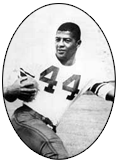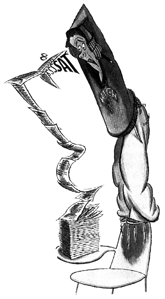MIT Shows Solid Progress in Black Student Enrollments
 This past June, the Massachusetts Institute of Technology dismissed James Sherley, an associate professor of biological engineering who is African American. Sherley had been denied tenure and believed that the decision was due to racism by his department’s colleagues. He subsequently staged a hunger strike to protest the decision to deny him tenure. This past June, the Massachusetts Institute of Technology dismissed James Sherley, an associate professor of biological engineering who is African American. Sherley had been denied tenure and believed that the decision was due to racism by his department’s colleagues. He subsequently staged a hunger strike to protest the decision to deny him tenure.
The fallout from the dismissal of Professor James Sherley has not negatively impacted MIT’s ability to attract black students. There are 99 black freshmen at MIT this year, making up a whopping 9.3 percent of the first-year class. Blacks are a larger percentage of the freshman class at MIT than is the case at Princeton, Brown, Georgetown, and many other high-ranking universities.
Since 2005 the number of black first-year students is up more than 76 percent. Important too is that black student yield at MIT increased from 47.8 percent in 2005 to 65.1 percent this year. This puts MIT among the nation’s leaders in black student yield.
  |
 “They were racist as hell. They were sexist as hell. But I love those guys.” “They were racist as hell. They were sexist as hell. But I love those guys.”
— Melvin Watt, chair of the Congressional Black Caucus, speaking of his fondness for the Founding Fathers, while teaching a class in civil rights at Winston-Salem State University, the historically black educational institution in North Carolina
|
African-American Students at Historically Black Law Schools
 New data from the American Bar Association shows, as expected, that the six law schools with the highest percentages of black students are the law schools that are located on the campuses of historically black universities. But what may come as a surprise to many readers is the fact that blacks make up a majority of the student bodies at only two of these six law schools. New data from the American Bar Association shows, as expected, that the six law schools with the highest percentages of black students are the law schools that are located on the campuses of historically black universities. But what may come as a surprise to many readers is the fact that blacks make up a majority of the student bodies at only two of these six law schools.
Blacks make up nearly three quarters of all students at the Howard University Law School. At Southern University’s law school in Baton Rouge, Louisiana, blacks are 55.6 percent of the student body. However, at the law schools at Texas Southern University, North Carolina Central University, Florida A&M University, and the University of the District of Columbia, blacks are less than one half the student bodies.
All told, these six law schools enroll 1,484 black students. This is 15.6 percent of all African-American law school students in the United States.
Howard University Drops Down in U.S. News Rankings
 There are currently 262 educational institutions in the United States that are rated as “national universities” in the Carnegie Foundation evaluation system. These research universities draw students from across the nation and offer a wide range of undergraduate and graduate degree programs. There are currently 262 educational institutions in the United States that are rated as “national universities” in the Carnegie Foundation evaluation system. These research universities draw students from across the nation and offer a wide range of undergraduate and graduate degree programs.
Howard University, the historically black institution in Washington, D.C., is ranked in 96th position this year in the annual ratings compiled by U.S. News & World Report. A year ago Howard was ranked 88th in this group.
Howard, the only historically black institution in the top group, was ranked above such well-known institutions as the University of Oklahoma, the University of South Carolina, Florida State, and the University of Oregon.
Spelman College, the historically black educational institution for black women in Atlanta, was ranked 75th among the 266 liberal arts colleges that draw their student bodies from across the nation. Spelman was tied in the rankings with the highly regarded Berea College in Kentucky and ahead of Sweet Briar College, Thomas Aquinas College, and Hillsdale College.
Syracuse University Honors a Fallen Hero
 At this season’s first football game, Syracuse University unveiled a statue of Ernie Davis, which will be displayed in the Carrier Dome, the university’s indoor stadium. The statue, sculpted by artist Sharon Locke of Rochester, New York, stands more than six feet high and weighs more than 500 pounds. At this season’s first football game, Syracuse University unveiled a statue of Ernie Davis, which will be displayed in the Carrier Dome, the university’s indoor stadium. The statue, sculpted by artist Sharon Locke of Rochester, New York, stands more than six feet high and weighs more than 500 pounds.
Ernie Davis, known by the nickname the Elmira Express, was recruited to play football by more than 50 universities, including Notre Dame. But Davis chose to stay close to home and play at Syracuse. In 1959 Davis led Syracuse to its only national championship in football. He was twice named All-American and in 1961 became the first African American to win the Heisman Trophy, signifying the best player in college football.
Davis was the first player selected in the 1962 National Football League draft. He was scheduled to suit up for the Cleveland Browns with the legendary running back Jim Brown, also a Syracuse alumnus. But prior to the 1962 season, Davis was diagnosed with leukemia. He died the next year, never playing a game of professional football.
Republican Senator Wants to Limit Financial Aid Program for College-Bound Students in the District of Columbia
 GOP Senator Tom Coburn of Oklahoma is seeking to implement changes in the popular D.C. Tuition Assistance Grant Program. GOP Senator Tom Coburn of Oklahoma is seeking to implement changes in the popular D.C. Tuition Assistance Grant Program.
Under the program, students from the District of Columbia, where the population is 60 percent black, can attend state colleges and universities around the country and pay the same tuition as students who live in that state. These grants can be as much as $10,000 a year and can be renewed for up to five years.
In addition, students who attend private colleges and universities in Maryland and Virginia or any historically black college or university, can receive grants of $2,500 per year for up to five years. Since the program was enacted in 1999, college enrollments among the District’s high school graduates has increased by 50 percent. More than 10,000 students have received grants with a total price tag of $141 million.
Senator Coburn wants to limit the program to students who demonstrate financial need. At the present time the program is open to all high school graduates in the District. Coburn also wants to increase the size of grants for students who want to enroll at private colleges outside of Washington.
City officials believe that the benefits of public education should be available to all residents of the District regardless of income, as is the case in other states. But the Coburn plan, with more money for low-income black students who want to attend private colleges in other states, may be the better alternative.

MICHIGAN TECHNOLOGICAL UNIVERSITY

Dean of the College of Sciences and Arts
Nominations and applications are invited for the position of Dean of the College of Sciences and Arts at Michigan Technological University. We seek a dynamic individual who will move the College forward in achieving the University’s goals of becoming a national university of choice and a premier research university of international stature.
The Dean is the chief academic officer of the College and takes the lead in articulating the importance of arts, humanities, computing, mathematics, natural sciences, and social sciences in the general education of all students. The Dean is expected to foster the development and enhancement of innovative programs at both the undergraduate and graduate levels and to encourage increased research and scholarly activity in the college.
Required qualifications include distinguished scholarly achievements that warrant appointment as a tenured professor; demonstrated record of academic leadership and fiscal responsibility in higher education; commitment to undergraduate and graduate education; demonstrated ability to attract external funding; and excellent communication and interpersonal skills.
For more information, visit www.csa.mtu.edu/CSA_Dean_Search
Application materials should include a cover letter containing a statement of personal qualifications and a description of the candidate's leadership and educational philosophies, current vitae, and the names and contact information of five or more references. Inquiries, nominations, and application materials should be directed to Professor Mark Gockenbach at msgocken@mtu.edu or (906) 487-2068.
Applications received by November 1, 2007 will receive full consideration, although review of applications will continue until the position is filled. Women and minorities are encouraged to apply.
Michigan Technological University is an equal opportunity/affirmative action employer.

KPMG Launches New Internship Program For Minority College Students Interested in Careers in Accounting
In an effort to increase the number of minority students in the accounting profession, KPMG, the tax, auditing, and accounting firm, has launched the Future Diversity Leaders program for undergraduate college students. Each year 50 students will be invited to a three-day leadership conference where they will meet with industry professionals. During the summer before their junior year, the students will participate in internships at KPMG offices. Students who successfully complete their internships have the opportunity to continue in the program the next summer and also to become eligible for scholarship aid for up to three years of college.
Appointments
 • Anita Hill, professor of law, social policy, and women’s studies at Brandeis University, is spending the current academic year as a Newhouse Scholar on the campus of Wellesley College. Professor Hill will spend the time analyzing the more than 25,000 letters and other correspondence she received regarding her testimony before the Senate Judiciary Committee during the hearings on the nomination of Clarence Thomas to the U.S. Supreme Court. • Anita Hill, professor of law, social policy, and women’s studies at Brandeis University, is spending the current academic year as a Newhouse Scholar on the campus of Wellesley College. Professor Hill will spend the time analyzing the more than 25,000 letters and other correspondence she received regarding her testimony before the Senate Judiciary Committee during the hearings on the nomination of Clarence Thomas to the U.S. Supreme Court.
 • Craig Barton, an associate professor of architecture at the University of Virginia, was appointed to a three-year term as chair of the university’s department of architecture and landscape architecture. • Craig Barton, an associate professor of architecture at the University of Virginia, was appointed to a three-year term as chair of the university’s department of architecture and landscape architecture.
Professor Barton is a graduate of Brown University and holds a master of architecture degree from Columbia University.
 • Yule Caise is the first recipient of the NAACP/NBC Fellowship in Screenwriting at the School of Theater, Film, and Television at the University of California at Los Angeles. The $20,000 fellowship will be awarded annually to a graduate student in screenwriting. The fellow will participate in internships at both NBC and the Hollywood chapter of the NAACP. • Yule Caise is the first recipient of the NAACP/NBC Fellowship in Screenwriting at the School of Theater, Film, and Television at the University of California at Los Angeles. The $20,000 fellowship will be awarded annually to a graduate student in screenwriting. The fellow will participate in internships at both NBC and the Hollywood chapter of the NAACP.
 • Lester C. Newman Jr., former president of Mississippi Valley State University, was hired as a consultant to the Mississippi Board of Trustees of State Institutions of Higher Learning. Dr. Newman will be asked to examine and make recommendations for increasing African-American male enrollment in Mississippi’s public universities. • Lester C. Newman Jr., former president of Mississippi Valley State University, was hired as a consultant to the Mississippi Board of Trustees of State Institutions of Higher Learning. Dr. Newman will be asked to examine and make recommendations for increasing African-American male enrollment in Mississippi’s public universities.
Newman, who resigned as president of Mississippi Valley State this past July, had three years remaining on a four-year employment contract. He had faced calls for his resignation from both faculty and alumni groups before deciding to leave his post.
 • Mary Hatwood Futrell, dean of the Graduate School of Education and Human Development and professor of educational leadership at George Washington University, was named to the board of visitors of historically black Virginia State University. • Mary Hatwood Futrell, dean of the Graduate School of Education and Human Development and professor of educational leadership at George Washington University, was named to the board of visitors of historically black Virginia State University.
• Denise Francois-Seeney was named assistant dean of the Monroe County campus of Northampton Community College in Tannersville, Pennsylvania. She has been on the college’s faculty since 2002.
Francois-Seeney is a graduate of Boston College and holds a master’s degree in political science from Villanova University. She is currently in the Ph.D. program at the University of Southern Mississippi.
 • Sandra E. Greene, professor of history at Cornell University, was named the 2007-08 John Hope Franklin Senior Fellow at the National Humanities Center in Research Triangle Park, North Carolina. Professor Greene will spend the academic year working on her project entitled Fragments: Memories of Enslavement From Ghana. • Sandra E. Greene, professor of history at Cornell University, was named the 2007-08 John Hope Franklin Senior Fellow at the National Humanities Center in Research Triangle Park, North Carolina. Professor Greene will spend the academic year working on her project entitled Fragments: Memories of Enslavement From Ghana.
Professor Greene has been on the Cornell University faculty since 1992. She is a graduate of Kalamazoo College and holds a master’s degree and a Ph.D. in African history from Northwestern University.
|
Racial Scoring Gap Widens on the SAT Writing Test
 This is the second year of the new SAT writing test. Many of the nation’s highest-ranked colleges and universities do not give much weight to the results on this test because they are skeptical of its predictive power to determine who will do well in college. Also, many test takers have been trained by coaching schools to hijack the writing subject assigned by adapting an essay already written by the student or parent. This is the second year of the new SAT writing test. Many of the nation’s highest-ranked colleges and universities do not give much weight to the results on this test because they are skeptical of its predictive power to determine who will do well in college. Also, many test takers have been trained by coaching schools to hijack the writing subject assigned by adapting an essay already written by the student or parent.
Nevertheless, The College Board reports that blacks do slightly better on the writing portion of the test in relation to whites than they do on other sections of the SAT. In 2007 the mean score on the writing test for blacks was 425. This is 93 points below the mean score for whites. The racial gap on the writing test actually widened by two points from 2006.
Many observers believed that the introduction of the writing component would, by design, lessen the racial scoring gap in order to deflect criticism of The College Board. It is probable that in some instances the people who score the new writing section would be able to detect the race of the writer by the vocabulary and subject matter of the student’s essay. There is then a suspicion in some quarters that the scorers of the test may be inclined to “give a break” to black students. Therefore, it is suggested that the examination is graded on a slight curve that benefits blacks and Hispanics.
No HBCUs Among the Greenest Colleges and Universities
 The environmental magazine Grist recently named the most “Green Colleges and Universities.” Topping the list was the College of the Atlantic in Bar Harbor, Maine. The only major at the college is human ecology. It was the first college in the United States to make a pledge to be “carbon neutral.” The environmental magazine Grist recently named the most “Green Colleges and Universities.” Topping the list was the College of the Atlantic in Bar Harbor, Maine. The only major at the college is human ecology. It was the first college in the United States to make a pledge to be “carbon neutral.”
There were no black colleges or universities among the 15 schools rated as the most “green.” There also was no black college or university among the schools given honorable mention.
Educational Aspirations of College-Bound Black Students
Black students who took the American College Testing Program’s ACT test in 2007 have set lofty educational goals. More than 18 percent of these black high school seniors said they planned to earn a graduate degree. Another 18 percent said that they hoped one day to complete a professional degree program.
For white students, 23.7 percent planned to obtain a graduate degree and 23.6 percent said they hoped to complete a professional degree program.

SANTA CLARA UNIVERSITY

Dean, School of Education, Counseling Psychology, and Pastoral Ministries (ECPPM)
Santa Clara University, a highly-ranked Jesuit Catholic institution located in Silicon Valley, invites applications and nominations for the position of ECPPM Dean. We seek candidates with strong records of academic and administrative accomplishments. Selected candidates will have:
- The ability to advance the School’s distinctive mission, identity, and legacy;
- Experience in developing, supporting, and advancing a vibrant academic environment for faculty and students;
- The ability to work effectively with diverse communities; and
- Experience with fund-raising and developing strategic partnerships across disciplines on campus and with key external constituencies.
Founded in 1851, Santa Clara University is a leading institution of higher education and is California’s oldest university. Santa Clara offers a rigorous undergraduate curriculum in the arts and sciences, business, and engineering, and has nationally-recognized graduate programs in business, counseling psychology, education, engineering, law, and pastoral ministries. With 4,600 undergraduate students and almost 4,000 graduate students, Santa Clara has a diverse community of scholars. Small classes and a commitment to the teaching-scholar faculty model characterize the University.
The School of Education, Counseling Psychology, and Pastoral Ministries was founded in 2001 and currently has approximately 750 graduate students, more than 90 full-time and part-time faculty, and 11 full-time staff. The School offers a Teacher Credential program and Masters programs in Education, Counseling and Counseling Psychology.
A detailed position description with application information is available at http://www.scu.edu/hr/careers/faculty.cfm. Applications are due by November 1, 2007. Santa Clara University is an EEO/AA employer committed to excellence through diversity. The University will provide reasonable accommodations to all qualified individuals with a disability.

New Chancellor at North Carolina Central University Lends Freshman Students a Helping Hand on Moving-In Day
 Charlie Nelms, the new chancellor of North Carolina Central University, the historically black educational institution in Durham, has pledged to usher in a new institutional culture at the university. Nelms believes that faculty and administrators should take a more proactive role in student life, easing their adjustment to college life. Charlie Nelms, the new chancellor of North Carolina Central University, the historically black educational institution in Durham, has pledged to usher in a new institutional culture at the university. Nelms believes that faculty and administrators should take a more proactive role in student life, easing their adjustment to college life.
To demonstrate this new commitment, Nelms, the provost, and other faculty and administrators were on hand in the sweltering heat to help freshman students move into their dormitories. Nelms requested that all faculty and staff spend at least part of the day helping students move in.
State Auditor Finds Proceeds From Vending Machines at North Carolina A&T State University Were Diverted Into Chancellor’s Spending Account
 A state auditor has found wide-ranging financial irregularities by the administration of James Renick, former chancellor of North Carolina A&T State University, the historically black educational institution in Greensboro. The audit found that $400,000 collected from vending machines on campus was deposited into Renick’s spending account. According to the state audit, the money was spent on artwork, alumni events, and travel for the chancellor’s wife. The money was earmarked for student financial aid and student activities programs. State auditors forwarded their report to the local district attorney, the Justice Department, and the FBI. A state auditor has found wide-ranging financial irregularities by the administration of James Renick, former chancellor of North Carolina A&T State University, the historically black educational institution in Greensboro. The audit found that $400,000 collected from vending machines on campus was deposited into Renick’s spending account. According to the state audit, the money was spent on artwork, alumni events, and travel for the chancellor’s wife. The money was earmarked for student financial aid and student activities programs. State auditors forwarded their report to the local district attorney, the Justice Department, and the FBI.
Renick stepped down as chancellor last year and is now a senior vice president at the American Council on Education.
A Black Man With a Stellar Resume Is Named President of Predominantly White Florida Gulf Coast University
 Wilson G. Bradshaw was named the third president of Florida Gulf Coast University in Fort Myers. He had been the president of Metropolitan State University in St. Paul, Minnesota, where he was also a professor of psychology. Wilson G. Bradshaw was named the third president of Florida Gulf Coast University in Fort Myers. He had been the president of Metropolitan State University in St. Paul, Minnesota, where he was also a professor of psychology.
In learning that the board of trustees voted unanimously to offer him the job among the three finalists, Dr. Bradshaw remarked, “This is certainly one of the best days of my life.”
Dr. Bradshaw is a graduate of Florida Atlantic University. He holds a master’s degree in experimental psychology from Florida Atlantic University and a Ph.D. in psychology from the University of Pittsburgh.
He has taught and held administrative posts at Georgia Southern University, Florida A&M University, Bloomsburg University of Pennsylvania, Florida Atlantic University, and Wright State University.
Florida Gulf Coast University has about 6,100 undergraduate students, 5.6 percent of whom are black.
University of Virginia Launches Newsletter on Diversity Efforts
 The Office of Diversity and Equity at the University of Virginia is launching a quarterly newsletter to inform the campus community, the press, alumni, and other interested parties about efforts to increase diversity on campus. The new e-mail newsletter also will be used by the university to recruit minority faculty and minority students to the university. The Office of Diversity and Equity at the University of Virginia is launching a quarterly newsletter to inform the campus community, the press, alumni, and other interested parties about efforts to increase diversity on campus. The new e-mail newsletter also will be used by the university to recruit minority faculty and minority students to the university.
William B. Harvey, vice president and chief diversity officer at UVA, notes that there will be no shortage of news to report. “On any given day a wide variety of interactions, activities, and accomplishments take place that celebrate the rich diversity of our community.”
  |
11% Black percentage of the 3,554 students in the Burlington, Vermont, school district.
0% Black percentage of the 337 teachers in the Burlington, Vermont, school district.
source: Burlington Free Press
|
Huge Racial Disparity in Results on the Teacher Licensing Examination in Massachusetts
 Each year more than 16,000 people take the Massachusetts Test for Educator Licensure. But more than half of the African Americans who take the test fail to achieve a passing grade. More than 75 percent of whites who take the examination pass the test and receive their teaching license. Each year more than 16,000 people take the Massachusetts Test for Educator Licensure. But more than half of the African Americans who take the test fail to achieve a passing grade. More than 75 percent of whites who take the examination pass the test and receive their teaching license.
The racial disparity in testing results has produced a shortage of minority teachers for public schools in the state. In addition, educators at teaching colleges in Massachusetts say that increasingly blacks are declining to pursue a curriculum leading to a career in teaching for fear that they will not pass the state licensing examination.
The state has convened a panel to examine if the licensing examination is in any way culturally biased. The panel will also discuss alternative means of qualifying teachers and will evaluate how teacher training for minority students can be improved.
Grants
• The Annenberg School for Communication at the University of Southern California received a $2.5 million grant from the Johnson Publishing Company for the establishment of the Johnson Communication Leadership Center. The center will offer Johnson Scholarships to African-American journalism students.
• Edward Waters College, the historically black educational institution in Jacksonville, Florida, received a $200,000 grant from the Jesse Ball duPont Fund. The college will use the grant to hire an associate vice president for academic affairs.
• Meharry Medical College received a $2 million grant from the state of Tennessee for the school’s Historically Black Colleges and Universities Wellness Project. The program promotes health and education programs to reduce health risks for people who live in communities near the college.
 • The Medical College of Georgia received a three-year, $659,000 grant from the U.S. Health Resources and Services Administration. The grant will be used to help increase racial diversity in the college’s nursing program. Deborah A. Smith, principal investigator on the grant and a nursing faculty member, notes, “To serve a diverse population, we have to attract, retain, and support a diverse student body.” • The Medical College of Georgia received a three-year, $659,000 grant from the U.S. Health Resources and Services Administration. The grant will be used to help increase racial diversity in the college’s nursing program. Deborah A. Smith, principal investigator on the grant and a nursing faculty member, notes, “To serve a diverse population, we have to attract, retain, and support a diverse student body.”
• Three historically black colleges and universities received $100,000 grants from the U.S. Department of Energy to enhance research on nuclear energy. The grants are to promote research for the development of safe, secure, and economical nuclear power.
All told, 38 institutions received $100,000 grants. The three participating black colleges and universities are Livingstone College, South Carolina State University, and Prairie View A&M University.
|
 .
.